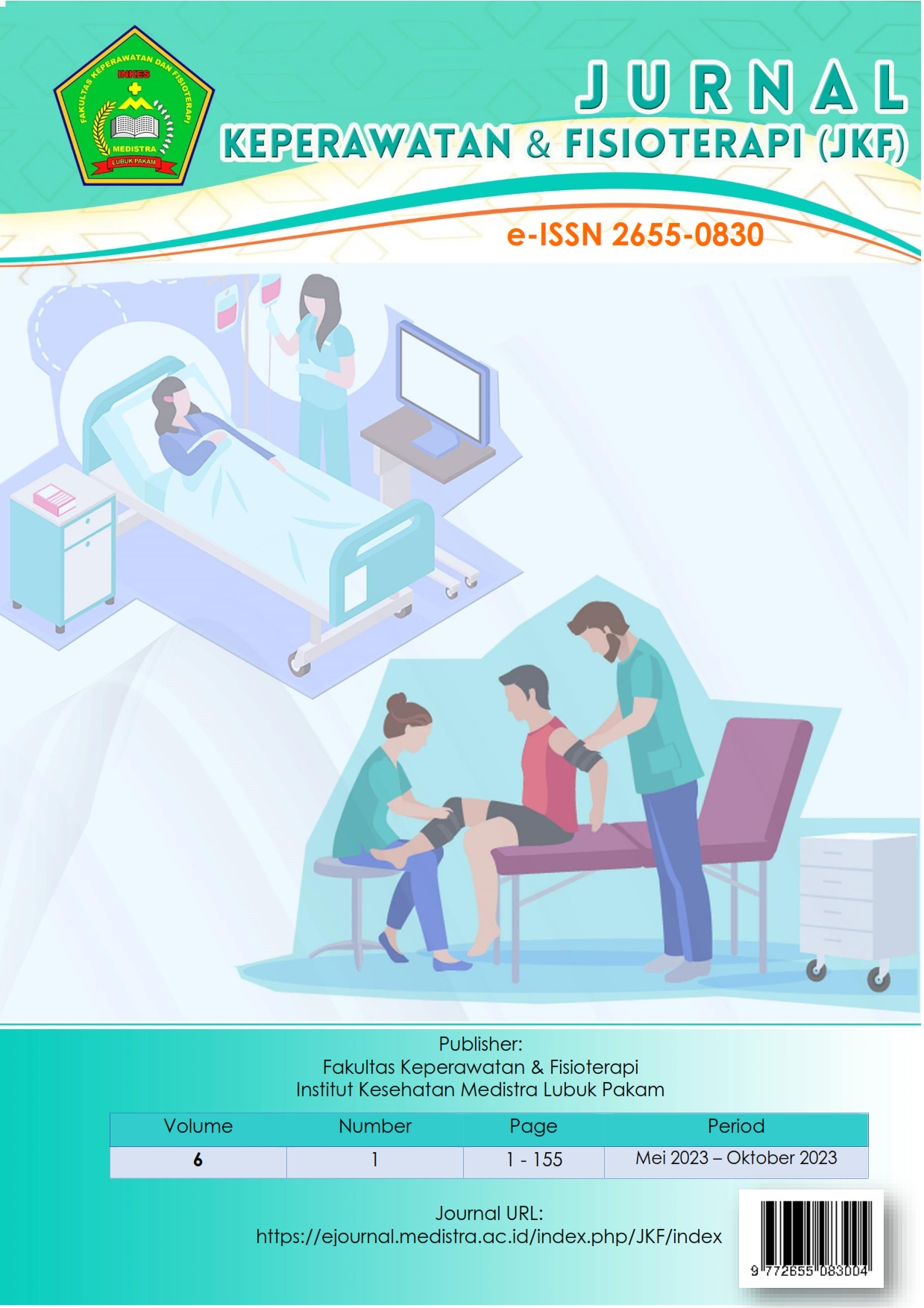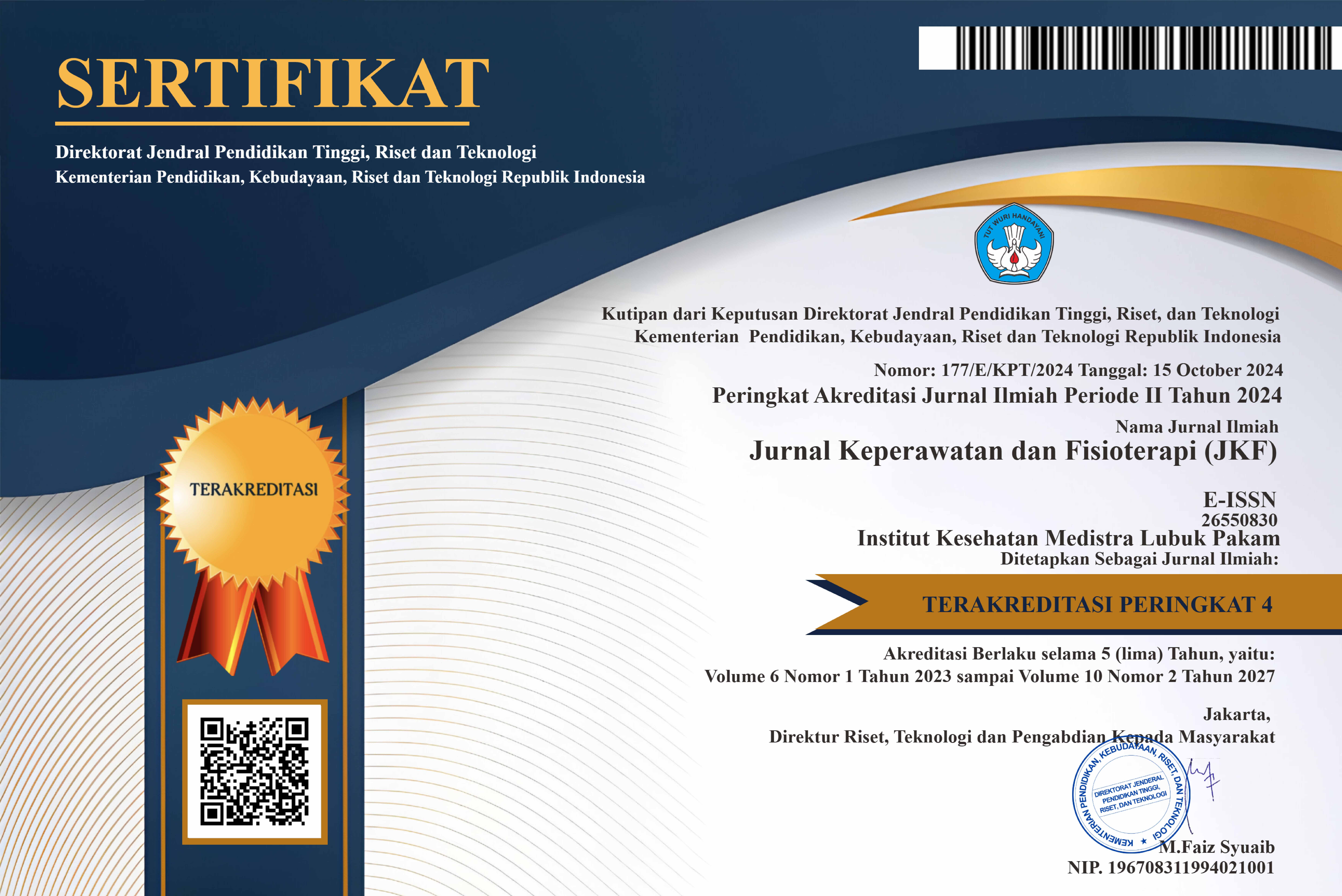Implementation of Early Warning Score in Early Detection of Emergencies in Patients with Catastrophic Diseases
DOI:
https://doi.org/10.35451/jkf.v6i1.2487Keywords:
EmergencyAbstract
Background: Emergency management in primary healthcare centers (Puskesmas) requires effective collaboration between doctors and nurses. High workloads and inefficient collaboration can impact the quality of care. The implementation of the Early Warning Score (EWS) potentially enhances early detection in patients with catastrophic diseases, but its effect on workload and teamwork has not been fully explored. Objective: This study aims to analyze the workload and the effectiveness of doctor-nurse collaboration in managing emergency patients at Puskesmas and to evaluate the application of EWS in early detection of emergencies in patients with catastrophic diseases. Methodology: This quantitative study uses a cross-sectional approach. Data were collected through questionnaires distributed to 30 doctors and 30 nurses at Puskesmas. Univariate analysis was used to describe workload and collaboration effectiveness, while bivariate analysis with chi-square tests was used to explore relationships between variables. Results: The majority of respondents reported high workloads (67%) and ineffective collaboration (53%). Bivariate analysis showed a significant relationship between workload and collaboration effectiveness (p = 0.02) and between collaboration effectiveness and quality of patient management (p = 0.01). The application of EWS showed effective early detection, with 60% of patients identified as high-risk. Discussion: High workload reduces collaboration effectiveness, which impacts emergency management. The implementation of EWS can improve early detection, but requires adequate training and resources. Conclusion: High workload impacts doctor-nurse collaboration, while EWS can improve emergency management when implemented properly.
Downloads
References
Smith, J. L., & Brown, P. R. (2021). The impact of early warning scores on emergency care outcomes: A systematic review. Journal of Emergency Nursing, 47(2), 122-131. https://doi.org/10.1016/j.jen.2021.02.012.
Miller, A. K., & Thompson, H. (2022). Doctor-nurse collaboration in emergency departments: A critical review of effective teamwork strategies. Journal of Clinical Nursing, 31(3), 410-417. https://doi.org/10.1111/jocn.15956
Ward, C. L., & Tan, H. S. (2023). Early warning systems and their role in early detection of critical patients in emergency settings. Critical Care Medicine, 51(5), 874-880. https://doi.org/10.1097/CCM.0000000000005086
Hunter, P. W., & Davidson, K. (2020). Workload and communication challenges in emergency care teams: A case study from a regional hospital. Healthcare Management Review, 45(4), 242-248. https://doi.org/10.1097/HMR.0000000000000212
Tan, R. G., & Lee, M. Y. (2019). Assessing the effectiveness of early warning score implementation in primary healthcare centers: A cross-sectional study. International Journal of Healthcare, 16(1), 56-62. https://doi.org/10.1016/j.ijh.2018.09.007.
Downloads
Published
Issue
Section
License
Copyright (c) 2023 Nisa El Hasanah

This work is licensed under a Creative Commons Attribution 4.0 International License.
Copyright in each article is the property of the Author.


























